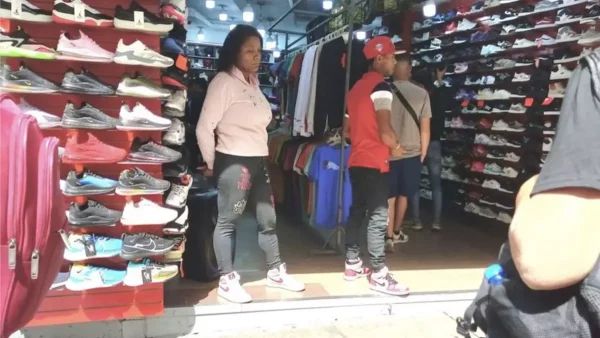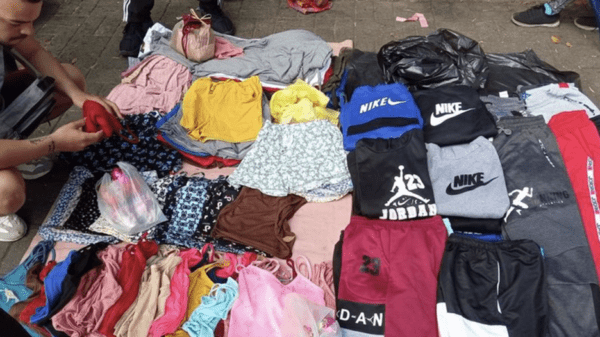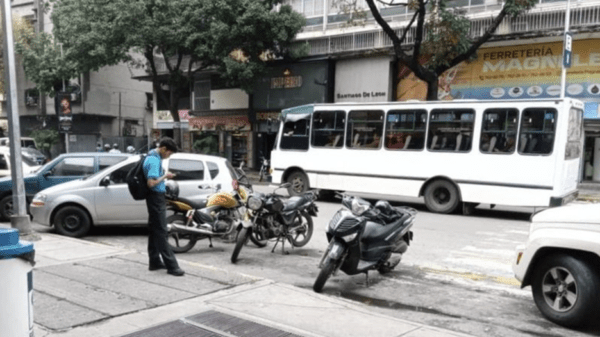The Hard Life of a Cuban ‘Mule’ to Supply Her Business

Maria travels to Guyana, Russia, Peru, Colombia or Venezuela to buy products as cheaply as possible for her store in Cuba.
By Yankiel Gutierrez Faife (14ymedio)
HAVANA TIMES – At age 42, María does not allow herself to waste one second. She gets up at 7:30 am, prepares breakfast for her children and runs to open her store, “L & B”, in the town of Camajuaní, Villa Clara. With the trips she makes as a mule to different countries – bringing clothes, shoes and perfumes to Cuba and carrying rum, tobacco and wines to other destinations – she has managed to set up a business that she tries to keep well stocked.
Her years of experience as an entrepreneur have earned her a reputation as one of the best business people in the area and she has gained a fairly loyal clientele, who trusts her to purchase quality products.
Before her apparent success, however, María had to make many sacrifices and work very hard. A few years ago, she found the opportunity to travel to several countries and buy wholesale merchandise to resell in Camajuaní. This idea came accompanied by her desire to start her own business, and she had to save every penny for months to pay for tickets and have money for purchases.

After going once to Guyana (in 2017), twice to Russia (in 2018), three times to Peru (in 2019) and two more times to Colombia (in 2022), this year she left for Venezuela with a detailed list of what she was looking for: blouses, pants, shirts, perfumes, appliances and everything that is difficult to find in Cuba or is in high demand.
Through Facebook groups she found accommodations for the four nights she was in Caracas and, although the place was not in very good condition, she decided to stay with a Cuban residing in Venezuela who rents rooms and offers an affordable rate.
At 20 dollars a night for a room, the price also covered breakfast, lunch, and shuttle service to and from the airport was available to her. However, those days she had to take the nine-kilometer journey by buseta, the Venezuelan bus, to go to the stores.
María knows that on this type of trip she must moderate her expenses and not waste money, since the increase in the price of the dollar in Cuba reduces the economic benefit that the merchandise she acquires gives her. However, she always looks for attractive items that are not on her list and that might interest her clients.
In Caracas, she explored shops and markets in search of the best deals, which are not difficult to find. The shops that offer good prices, and where Cubans go, are often managed by Chileans, Colombians, Chinese, Turks and Arabs. Each seller has their own trick, and travelers like María create their own map of the places that can be approached and which ones will try to overcharge.
At the La Hoyada market, for example, she can buy cheap clothes: overalls, coats and shorts for $5 each, or three sweaters for $10. On Sabana Grande Boulevard, however, it is better to buy shoes. There you can find brands popular among young people, such as Jordan, New Balance, Nike and Adidas at bargain prices, between 15 and 35 dollars, while the originals can cost up to 200 dollars.

One goes to Arab stores in search of fragrances. Perfumes that are popular among customers, and that are highly valued in Cuba, can be found for up to a dollar. On the other hand, in Chinese stores it is better to buy cosmetics and jewelry.
In the streets surrounding the Cemetery Market there are also many different things to buy: sets of sheets for 8 dollars, mixers for 15, Reina-brand crock pots for 50, fans for 12, hair dryers for 10, irons for 20, and they are sold by Turkish merchants.
After the last search, and after loading the merchandise into two 23-kilogram suitcases, Maria does not know if she will ever repeat the journey again. The trip back to Cuba is full of anxiety and stress, especially when passing through the eyes of airport officials and customs restrictions. At times, she recounts, she has been mistreated, or, in addition they have made her lose part of the merchandise.
Once the controls have been cleared comes the “hardest” part: selling the products in Camajuaní. Arranging the goods on display, making calculations and examining the goods – which sometimes arrive in poor condition – do not always guarantee success. Maria knows that she competes with other Camajuaní merchants who, like her, travel and sell for a living.
Translated by Norma Whiting for Translating Cuba.






Stephen, you missed the entire essence of the article. These Cuban “mules”, and the majority are women, are fulfilling a much needed service to their communities and their country. These Cuban women are truly full fledged entrepreneurs. Read the following quoted sentence from the article carefully.
“Her years of experience as an entrepreneur have earned her a reputation as one of the best business people in the area and she has gained a fairly loyal clientele, who trusts her to purchase quality products.” In your opinion, how is this “very bad”? Maria needs to be perpetually praised.
These mules, and there are many throughout the country, are helping ordinary Cubans obtain and purchase products unavailable in state run stores. The Cuban government allows these entrepreneurs to operate mostly unfettered.
Stephen, what gobbledygook are you spewing with your incomprehensible statement which undermines the undeniably good works of Cuban mules. You state: “ . . . transport goods when a whole container 40 feet can come fora transport cost of 10 cents a lb or $5300 U S from India or China or about 4 cents a lb from Mexico or 5 cents a lb from Canada for a whole container”. ???
What exactly are you saying besides being negatively opposed? No, Stephen, Cuban mules work is not as you indicate “ This is a very bad way and a expensive . . . “ In fact, all these Cuban mules, women and men, are contributing to the Cuban economy in many ways more so than their inept government. Plus, they must pay taxes to the Cuban government.
Moreover, with the money they earn they are providing an economic multiplier effect to the economy. Maria has had to work vey hard to make her business successful.
And, in Cuba given all the obstacles the totalitarian government puts in place to inhibit entrepreneurs from succeeding, Maria and all Cuban mules must be congratulated. Hurray for Maria!
This is a very bad way and a expensive to both get and transport goods when a whole container 40 feet can come fora transport cost of 10 cents a lb or $5300 U S from India or China or about 4 cents a lb from Mexico or 5 cents a lb from Canada for a whole container. Cuba needs to make major changes in the economic model.